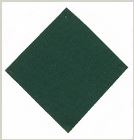5th Light Trench Mortar Battery
From Our Contribution
| [[File:]] | |
 Shoulder patch |
Brief History
The 5th Light Trench Mortar Battery was a part of the 5th Brigade of the 2nd Division. It was raised in Egypt after the ANZAC Division returned from Gallipoli, and the 'doubling of the AIF' took place. Light Trench Mortar Batteries were under the direct command of the Brigade Headquarters but were generally deployed close to the front line so that the enemy was within range.
Trench Mortar Batteries and Machine Gun Companies gave Brigades their own integral fire support. The trench mortars were the Brigade's own ‘artillery’ and the soldiers were generally drawn from units within the Brigade. The Battery would have provided support exclusively to the Battalions of the Brigade.
Mortars provide indirect fire, firing high-explosive fragmentation bombs at a high angle, which then detonate on impact or very soon thereafter. The projectile follows a high looping path to the target, with its point of impact determined by the power of the propelling charge, the elevation of the barrel or tube, and the direction (or bearing) it is pointing.
They were generally equipped with the 3 inch Stokes Mortar which had a range of approx. 800 yards. It was served by a two or three man crew. The ‘Number One’ in the crew would lay or aim the mortar - although they were not in direct line of sight to the enemy.
The ‘Number Two’ loaded and fired the mortar.
He would load a bomb into the muzzle of the mortar by hand. As he released it, the bomb would slide down the barrel until it hit a firing pin in the mortar’s base.
This would initiate a primer in the base of the bomb, igniting the cordite propellant charge, the blast from which would then project the bomb out of the barrel.
The flash and blast of the mortar could give its position away so they were generally fired from cover - such as from the base of a trench - the deeper the better!
The ‘Number Three’s’ task was to keep a supply of bombs up to the mortar.
This involved collecting ammunition from carrying parties and stowing it nearby, then unpacking the ‘ready’ bombs from their transportation packaging.
On receipt of an order to fire, the Number Three would adjust the charges if necessary to match the range and elevation necessary to engage the target by removing charge bags of propellant from the bomb.
When the fire mission commenced, he would remove the safety pin from the fuze before passing the bomb to the Number Two.
At high rates of fire it was possible to get 15-20 bombs in the air before the first one hit the ground; this was perhaps the mortar’ most valued attribute - a high volume of fire in a short space of time. The high angle trajectory meant that bombs descended steeply and could lob directly into a trench or dugout and then detonate to deadly effect. Hundreds of jagged steel splinters would be created by each bursting bomb.
Twenty one men lost their life while posted to this unit.
Individual Honours
- 2 x Military Cross
- 6 x Military Medal
- 1 x Mentioned in Despatches
Notes